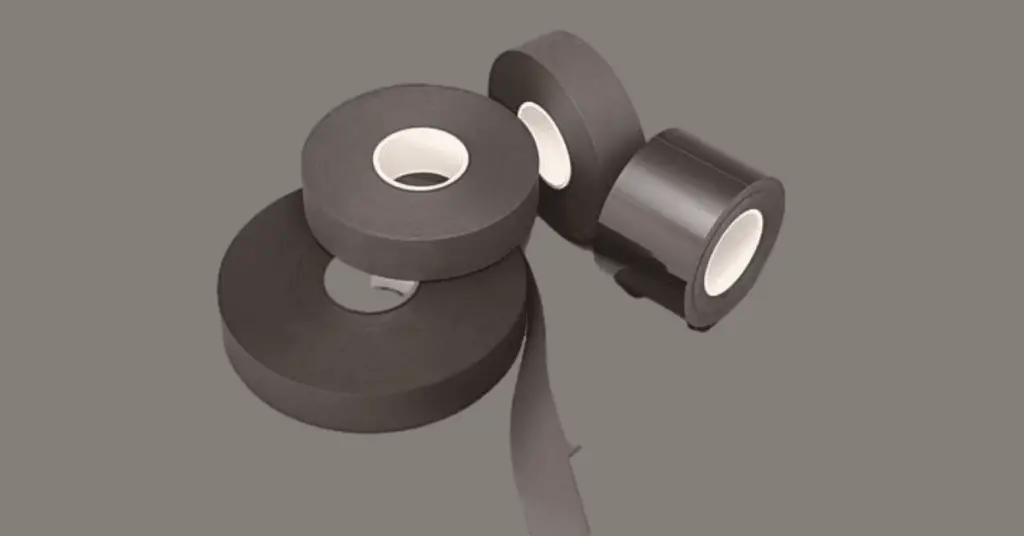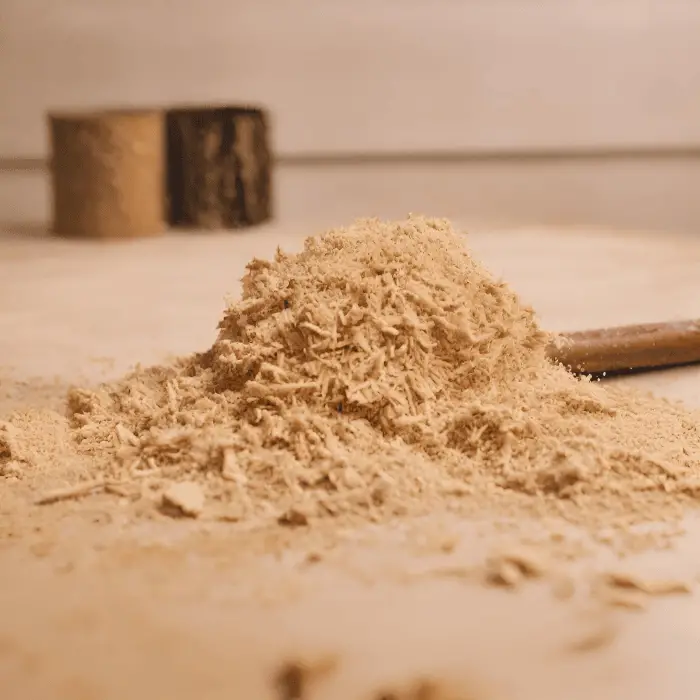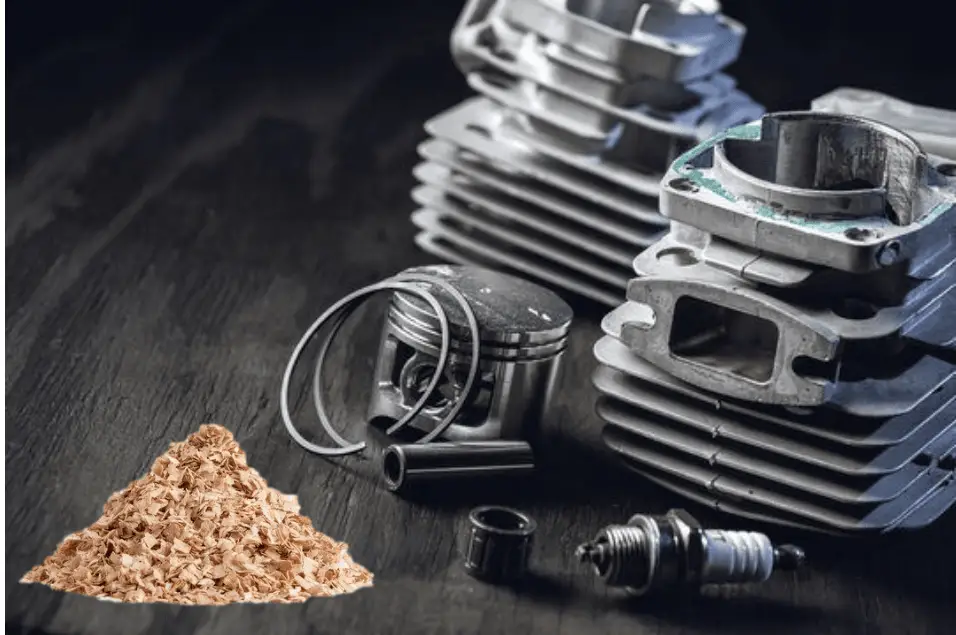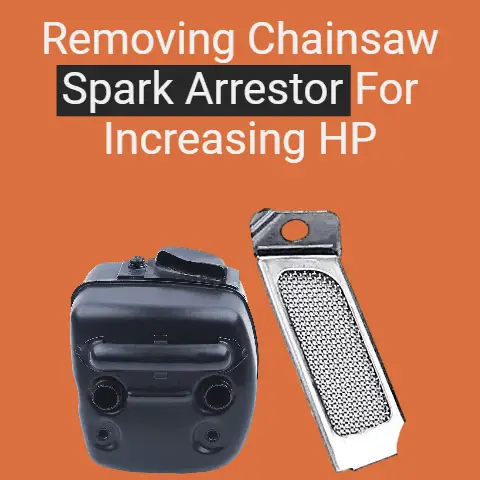How To Port A Chainsaw For Power Gain (Up To 25%)
Opening up the exhaust system is the most common method for increasing chainsaw power. Using tools like a grinder or drill, the exhaust pipe can be widened to improve airflow. This expanded exhaust path allows the engine to breathe more freely, smoothing out the expulsion of exhaust gases. An unrestricted exhaust enables the chainsaw to efficiently channel out spent combustion, resulting in a boost to overall performance.
The Author
As an experienced chainsaw mechanic, let me walk you through the process of porting your saw to get more power. Porting can give you a 10-25% boost, though the exact amount depends on your saw’s specs and condition.
Here are the steps I use on all my customer’s saws with great success:
First, we’ll open up the exhaust port to improve airflow. I gently grind it larger with a rotary tool. Don’t worry, this isn’t as scary as it sounds if you go slowly.
Next, we smooth out the port to prevent turbulence. Good airflow is key for max power.
The third step is polishing the intake tract to allow more fuel and air in. More mix means more boom!
Now we adjust the carb for the new flow dynamics. Having the fuel tuning dialed in optimizes the gains from porting.
Finally, I have a “light porting” method I use for beginners. We make mild mods like a simple muffler baffle removal to boost power without huge risks.
Trust me, anyone can handle this starter port job. Once you feel more comfortable, we can dive into more advanced porting. But even basic work makes these saws come alive!
Let me know if you’re ready to unlock your chainsaw’s hidden muscle. Porting is the best way to maximize your saw’s performance.
today I’m going to show you how I do it…
…and how you can do the same thing.

What Is Chainsaw Porting?
Porting is about optimizing gas flow and compression to wake up a saw. Let me elaborate a bit on the basics for newcomers.
Porting comes down to strategic modifications that work together:
- Carb adjustments or replacement to match the new airflow
- Grinding the cylinder and ports for better intake and exhaust
- Tuning the ports’ size, shape and timing to enhance cylinder filling
All this lets more fuel/air enter the cylinder and gets spent gases out quickly. More mix and better scavenging equals big power gains.
It’s like the difference between a stock Jonsered 490 and a hopped-up Partner 5000. Same basic engine, but the port work really brings the 5000 to life.
Now for homeowners doing the occasional tree, porting may be overkill. The added cutting time isn’t worth the hassle and expense. Better to focus on an ergonomic saw that handles well for those lighter jobs.
But for professional cutters doing this all day? That 20-30% boost in productivity from porting can really impact their workload and profits.
Either way, you’ve got the right idea about matching the saw to the task. Let me know if you ever want to dive deeper into performance mods!
How to do porting?
Here are several things you could do for porting your chainsaw. Here are some of the ideas –
1st: Enlarge the Exhaust
Let me explain the importance of opening up the exhaust on these saws. The exhaust path is the key to freeing up power. Here’s how I’d go about it:
First up, pop off that muffler cover to get access to the port. Not sure how? No worries, YouTube has tutorials for your model.
Now you’ll need some metal-cutting tools – an angle grinder or drill with a burr bit does the trick. Time to make some room!
Take a close look at the size of the stock intake and exhaust ports. We’re gonna widen them up nice and wide. Carefully grind or drill out each one.
The goal is to open up the ports as much as possible without compromising structural integrity. Bigger ports equal better flow.
When you’re done, check that the new exhaust port opening is big enough to fit your hand through. That’s usually wide enough to make these saws really breathe!
It may look involved, but porting isn’t too tough. The right tools and some patience are all you need to unlock that extra chainsaw power. Let me know if you need any advice – I’m always happy to help a fellow saw tinkerer!
2nd: squishing
It’s another great way to juice more power from your saw through wood porting.
The goal with squish porting is to decrease the combustion chamber volume. All you need to do is drop the jug (cylinder) closer to the crankcase.
There’s a couple ways to accomplish this. You can either replace the base gasket with a thinner one to lower the jug, or actually machine the surfaces for a tighter squish.
Lowering the jug height compresses that air/fuel mix more at ignition. That makes more power in the bang! More compression also equals better efficiency.
The squish method is a little more involved than just grinding the ports, but it can really wake up a big bore kit. If you’re looking for max performance, combining port work with a good squish job is the hot ticket.
Let me know if you need any tips on getting that jug dropped. I’d be happy to help you dial in an awesome squish clearance. We’ll have that saw screaming!

3rd: A few more tweaks
After doing the above two steps, you will experience a better compression ratio from the engine.
Most folks stop after opening the exhaust and intake ports. But you can gain even more grunt with further mods:
- Reshape the transfer ports in the cylinder to improve flow
- Adjust port timing by strategic grinding and polishing
- Lighten the piston by removing any non-essential material
- Swap the stock ignition coil for a non-limited racing coil
- Mirror polish the intake ports under the piston skirt
- Even tweak the crankcase seals and gaskets to fine-tune squish
It’s a lot of precision work, but pushing the engine’s compression ratio to the max with these tricks really wakes these saws up.
My race saws go through the full regimen – every last bit of flow and efficiency squeezed out. You feel it on the first hit of the throttle. But it’s not for the faint of heart!
4th: Using sawdust (Irregular manner)
The above processes are common methods and are considered safe.
As an old hand at porting saws, let me share my thoughts on using sawdust to increase compression. It’s one approach I’ve seen folks try over the years with mixed results.
The idea is you pack sawdust into the chamber to reduce volume and raise the compression ratio. No doubt, more squeeze means more power in each stroke. But sawdust has some big downsides.

First, all that extra heat and pressure put a lot of strain on the cylinder and rings. It can quickly wear out the bore.
Also, sawdust doesn’t allow the chamber to cool effectively between cycles. Reducing heat is a main goal of porting. More heat causes premature engine damage.
Finally, carbonized sawdust can clog up the ports and piston over time. That leads to poor performance.

In my experience, widening the ports and optimizing squish give the best power gains safely. Sawdust may work very temporarily, but risks expensive engine repairs down the road.
My advice? Stick to traditional porting methods. A few thoughtful mods make these saws really come to life without compromising their longevity.
5th: Light porting (Less Risky alternative methods)
I get it, not everyone wants to dive headfirst into radical porting jobs on their saws. As a seasoned chainsaw mechanic, let me share some “light porting” tips to slightly boost performance without much risk.
Here’s my starter list for novice saw tuners:
- Carefully polish the exhaust port to smooth airflow without removing material.
- Reduce the jug height just a few thousandths of an inch to tweak compression.
- Open the muffler outlet to the factory spec or a tad more. No need for huge gains here.
- Richen up the carb a bit to match the new airflow.
You can also pick up some extra grunt by removing things like spark arrestors. Little tweaks make a difference.
The key is taking it slow, and making changes a bit at a time. Check the specs, monitor engine temp, keep an ear out for pinging. Provided you’re careful, light porting is a great way to learn saw tuning.
Before you know it, you’ll have the skills and confidence for more advanced modifications. But start small, get a feel for your tools and your saw’s response. Then build up at your own pace – that’s the best way into serious port work. Let me know if you need any pointers along the way!
Cautions To Take
Taking baby steps is the smart approach when you’re new to porting. No need to get too crazy right off the bat. Let me tell you – slow and steady wins the race when you’re learning saw tuning.
Just smoothing out the ports without removing metal is a nice easy start. And barely nibbling the jug height or muffler outlet makes a noticeable difference without much risk. Little things like optimizing the carb and tossing some spark arrestor screens can wake a sleepy saw up too.
The key is incrementally making those small refinements while paying close attention to how the saw responds. Keep an eagle eye on the temps and listen for any engine knocking. As long as you stay cautious and tune based on your saw’s feedback, light porting is a great way to get your feet wet.
Before long, you’ll have the confidence and skill to advance to more aggressive porting. But walk before you run. Take your time learning what mods work for your particular saw and wood. No need to rush into wild performance gains if you’re not ready.
Why Port a Chainsaw?
The factory settings on production chainsaws are a compromise – moderate power balanced with reliability. But power-hungry users have needs beyond a stock saw’s capabilities.
That’s where porting comes in. By optimizing intake, exhaust, transfers, and compression, you can unlock way more potential from a workhorse saw. The key is improving airflow and cylinder filling for more efficient combustion.
You’ll gain substantial horsepower and torque, while maintaining the saw’s durability. Expect peak RPMs at or above factory limits after port work, without the extremes of race porting.
It’s the ideal tuning solution for a pro saw running long hours in the woods daily. Of course you need strong mechanical skills and proper tools to port correctly.
But for those with the know-how, it offers big performance payoffs. The time savings from faster cutting quickly offsets the porting effort.
Benefits & Risks: Is It Worth Porting?
Benefits
- Smoother operation from reduced backpressure
- Cooler running thanks to superior breathing
- Longer engine life due to lower temps
- More power via higher compression ratio
- Increased reliability from optimized airflow
- The saw just runs happier with opened up ports!
There’s a common misconception that porting reduces reliability. But when done properly, it’s quite the opposite. The saw operates so much better across the power band – it’s like giving a tired machine new life!
The key is managing the tradeoff between airflow and engine integrity. An experienced hand can strike that perfect balance. It takes some artistry alongside the mechanics.
But stick to cautious, incremental improvements and you’ll be rewarded with a saw that’s both stronger and longer-lasting after port work. The engine just runs so much healthier when it can breathe freely.
Risks
You raise some excellent points about the potential downsides of porting that need consideration:
- Porting voids any factory warranty coverage. Once you modify it, the maker won’t honor defects.
- There’s always a risk of the builder making mistakes that ruin the saw forever. Not all porters have the skills.
- Some cobbled-together port jobs yield underwhelming gains or poor reliability.
- Even with good port work, the saw loses resale value. Modifications don’t increase market price.
So it’s a gamble – will the porting pay off, or just create problems? There are no guarantees.
But in the right hands, porting really makes these saws shine. The power and longevity gains of a well-built ported saw are undeniable. They run so much stronger and cooler than hyped-up stock ones.
It comes down to finding a reputable and experienced porter you trust to enhance the saw, not butcher it. Do your research to get the mods you want without compromising reliability.
And only port a saw you plan to use long-term, not sell later. View it as improving your own equipment, not building value. There are risks, but strategic porting pays off in the timber.
Let me know if you need any advice finding a top-notch porter or managing expectations. Happy to lend my expertise!
Should you do it?
As a fellow professional saw user, I completely understand where you’re coming from. When our livelihood depends on the saw, power and speed equal money in the bank.
You’re right, for high-volume cutters, even small performance gains add up to major productivity over time. I’ve heard fallers rave about how ported saws save them hours of work daily.
While the average homeowner may not need that extra muscle, some weekend warriors port their saws for occasional heavy-duty use. And folks dissatisfied with an underpowered stock saw find porting gives it new life. With proper care, a ported saw will run reliably for decades.
At the end of the day, porting pays off biggest for the pros whose saws earn their keep each day. That extra 20-30% of cutting speed directly improves the bottom line. Time is money, like you know.
Doing yourself vs. hiring someone
Hiring Builders/mechanic: A to Z
There are many challenges in finding a skilled porter. Let me offer some guidance on picking the right builder:
- Results will vary – no two porters are the same. Research and reputation are key.
- Don’t fall for hype alone. Proven expertise and experience matter most.
- Turnaround time is often painfully long – weeks or months in some cases. Be prepared to be patient.
- Many shops just swap parts rather than tune. Find one that truly optimizes airflow and compression.
- It’s an investment, often $500+. Make sure your money brings the gains you expect.
- If no local options, search builders online, despite shipping costs. Read reviews!
- Shipping saws isn’t cheap, but worthwhile for the right work. Calculate total costs.
It’s a hassle picking a builder, but once you find a good one, it pays dividends long-term. A finely tuned saw will earn back that investment many times over through years of hard use.
Take your time selecting based on reputation and expertise. Don’t settle for less than stellar workmanship. A properly ported saw is a joy to run for its entire working life.
Doing Yourself: The Basic
Porting is an advanced technique that requires experience and skill. Let me explain when it’s wise to avoid porting:
- If you’re new to engine mods, steer clear until you gain more knowledge. Stick to basics.
- Learn 2-stroke theory and your saw’s mechanics inside out before touching ports.
- Start small with easy muffler/carb tweaks to hone your skills.
- Use light porting as a stepping stone to more aggressive grinding.
- Having an experienced mechanic guide you is hugely valuable when starting out.
- Attempting porting without enough know-how risks permanent damage. Some mistakes can’t be undone.
It’s not something to just dive into blindly. Build your modification chops slowly, through incremental improvements. Let your saw tell you what works.
With diligent practice and mentorship from a seasoned porter, you can acquire the expertise needed to maximize gains safely. But patience and prudence are key.
My Experience and Results on Porting Saw
My approach depends on each saw’s unique needs. Here’s a rundown of some jobs and the results:
On a Stihl 310, just opening the muffler more and retuning the carb got a 10% boost in about an hour. Easy starter mod.
For a 044, swapping in a 046 dual-port muffler cover and tuning the carb took 15 mins for similar 10% gains. Bolt-on power.
But for big torque, I went all-out on a 066 – dual port cover, carb work, and a coil. Around 15-20% stronger after those mods.
I aim for 10-20% based on the saw, averaging around 15%. The key is matching the mods to the build. Some just need a little muffler love, others want the full port treatment.
It comes down to experience reading each engine and knowing which performance tweaks will give the best bang for buck. I’ve found those sweet spots for most pro Stihls.
Why Do Companies Not Port Their Saws?
The answer is – emissions regulations. Let me expand on how rules limit factory saw performance:
- EPA laws prohibit selling new saws above certain emission levels. Porting increases exhaust output.
- Many brands make higher-performing models for non-US markets with fewer restrictions.
- Over time, US models have gotten more choked up to meet tightening emission standards.
- Older saws like the 026 had much better stock airflow and tuning before regulations tightened.
- EPA rules have forced added muffler baffles, smaller ports, rev limiters to restrict mods.
- Dealers can’t legally port or tune saws – it violates EPA compliance. They face heavy fines.
- Dealers get warnings from the EPA to refrain from performance mods.
But while brands and dealers are bound by emissions laws, individual owners are free to modify their saws without restriction. So porting levels the playing field for enthusiasts seeking performance the EPA has legislated away.
It’s an unfortunate necessity to get the most from modern production saws sold in the US. Thankfully DIY porting remains legal despite tighter regulations on manufacturers.
Final Thought
The chainsaw is one of the most used power tools among trees and woodworking professionals. It is also very popular among homeowners with a big properties.
With porting, you can take your chainsaw’s engine power to the fullest and get the maximum value from it.
However, do not forget the risks associated with porting. One single mistake can make your chainsaw nothing but a toy.
Let me know if you want to push your porting to the next level. I can offer tips on how to safely tune your saw to its absolute peak potential. We can turn your weekend warrior into a real screamer!


